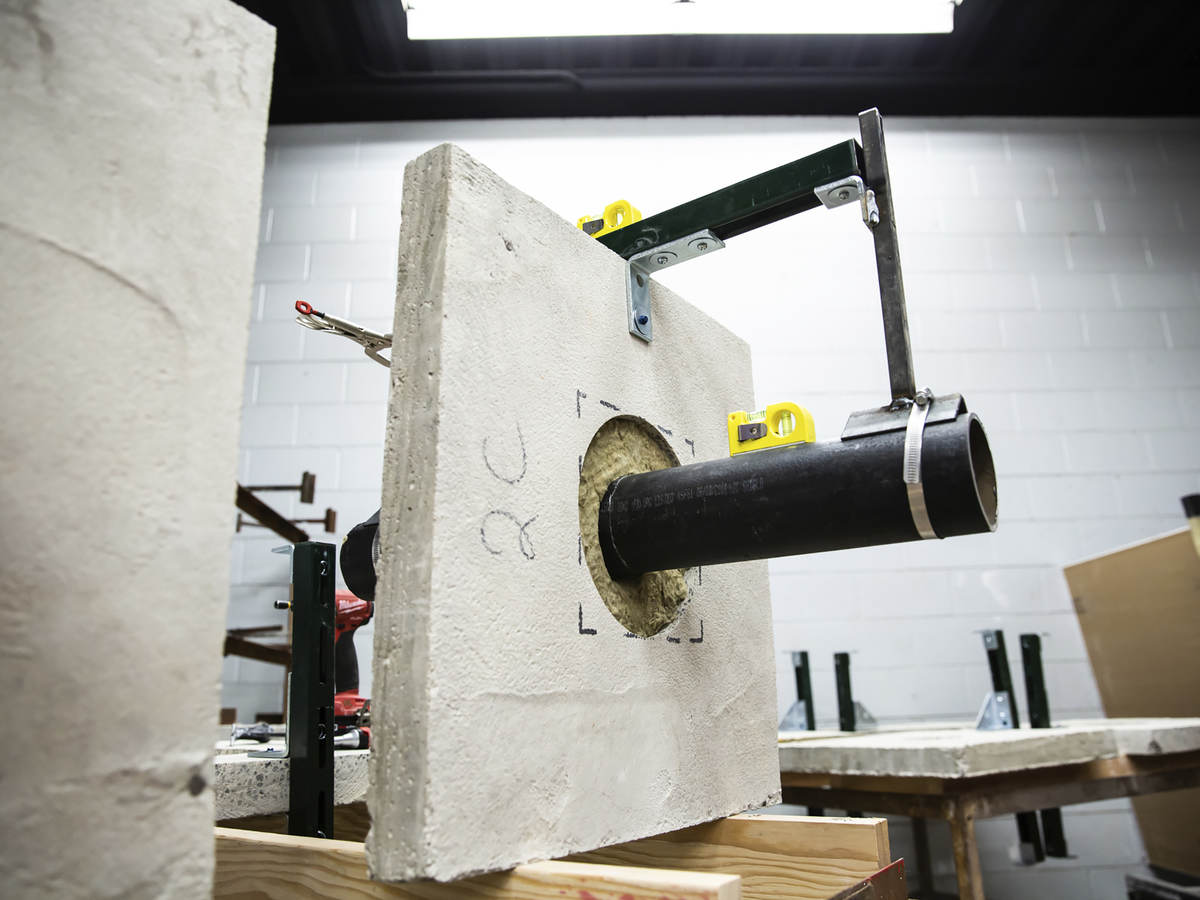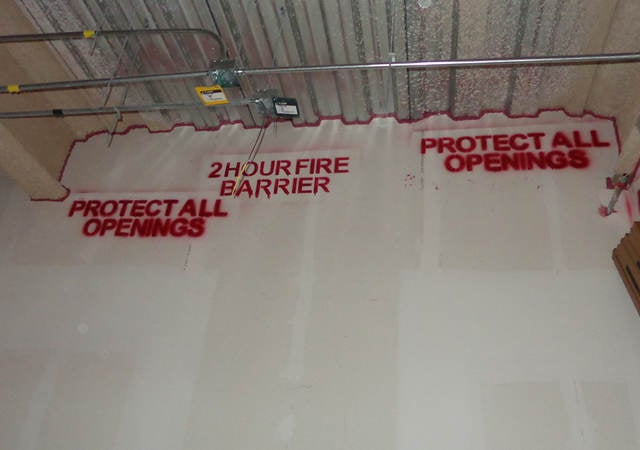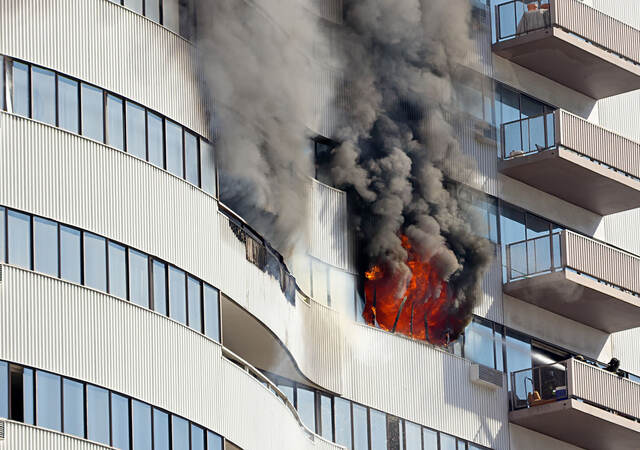This is the first of a series of three articles by Simon Ince of UL Solutions that will examine today’s inflection point in fire protection. The articles will look at improved due diligence in the process of design, specification, procurement and installation of firestopping systems. The final article will examine the role third party certification plays in supporting a more robust and accountable fire safety regime.
In his first article, Simon examines the future of fire safety and firestopping, as well as touching on the impact of the Hackitt Review and the new proposed building safety regulations.
How did we get to this point of no return?
 Dame Judith Hackitt’s review of fire safety and construction after the Grenfell Tower disaster identified systemic construction failures that contributed to a system that was, in her words, not fit for purpose. Her recommendations addressed issues in all areas of the construction system, from design through planning, building and occupation.
Dame Judith Hackitt’s review of fire safety and construction after the Grenfell Tower disaster identified systemic construction failures that contributed to a system that was, in her words, not fit for purpose. Her recommendations addressed issues in all areas of the construction system, from design through planning, building and occupation.
Although the recommendations are primarily aimed at high rise residential buildings, the UK Government intends to encourage good practice in all new build construction. At first the new changes will be for England only, however some elements of the new proposed system are expected to be adopted by the Scottish, Welsh and Northern Ireland governments. For example, the requirements for construction products and competence of architects will be encouraged nationwide.
Regardless, fire safety in residential buildings will definitely change. With regulatory changes proposed by government to address the Hackitt Review findings, more control over the process of construction is on the horizon. In particular, the Government will increase focus on improving the standard of installed fire protection measures. This new regime will force cultural change for those who are involved in making our buildings fire safe for occupation.
One crucial part of a building’s fire prevention measures is that of firestopping: sealing holes made in fire compartment walls and floors by services’ penetrations passing through those fire resisting walls and floors. Ventilation systems, electrical, communication and plumbing services all cause breaches in compartment lines through which fire can spread. Uncontrolled fire spread can lead to loss of life and property. With the UK predominantly using fire containment as the strategy for protecting life safety in buildings, compartmentation must be done correctly.
An assumption of competence is no longer good enough
Competence is the key to compliance and underpins every element of fire safety in our built environment. Lack of competence has led to failures in fire containment, with the total loss of buildings and tragic loss of life.
After the publication of Dame Judith Hackitt’s report, a steering group was established to specifically look at required competences and examine how each profession within the construction chain can demonstrate proficiency. In the summer of 2019, the steering group issued their interim report, ‘Raising the Bar’. The main working group, WG0, identified what competence is: skills, attitude, knowledge and education, or SAKE. Each of the supporting working groups adopted the SAKE principle when examining the required competences for each profession and how best that defined competence can be demonstrated.
The working groups looked at the following professions/areas:
- Engineers (WG1)
- Installers (WG2)
- Fire engineers (WG3)
- Fire risk assessors (WG4)
- Fire safety enforcing officers (WG5)
- Building standards professionals (WG6)
- Building designers, including architects (WG7)
- Building safety managers (WG8)
- Site supervisors (WG9)
- Project managers (WG10)
- Procurement professionals (WG11)
- Products (WG12)
Competence is essential if any new regulations are to deliver the required outcomes.
Get fire safety on the agenda early
 Getting fire stopping right depends on making it a priority in any new build project. Early engagement in fire safety is paramount; it sets up fire safety as an essential part of construction and not an afterthought. If fire safety is on the agenda from the design and concept of a new build project, it has a better chance of staying on the agenda for the entirety of the new build project. The Royal Institute of British Architects (RIBA) plan of works provides a framework of best practice, which when applied to a new build should identify the specific safety requirements and the safety roles at every stage of the project.
Getting fire stopping right depends on making it a priority in any new build project. Early engagement in fire safety is paramount; it sets up fire safety as an essential part of construction and not an afterthought. If fire safety is on the agenda from the design and concept of a new build project, it has a better chance of staying on the agenda for the entirety of the new build project. The Royal Institute of British Architects (RIBA) plan of works provides a framework of best practice, which when applied to a new build should identify the specific safety requirements and the safety roles at every stage of the project.
Construction, design and management regulations define the roles of principal designer and principal contractor, who will be the accountable persons within the new gateway system proposed by the UK Government. The gateways will effectively prevent projects from moving forward if the correct information isn’t submitted to the building safety regulator by the correct accountable person.
The building safety regulator will be responsible for all major regulatory decisions made at key points during the design, construction, occupation and refurbishment of a building in scope. They will have powers to prevent new buildings from being occupied, if the evidence of fire safety compliance is insufficient to confirm that fire safety is appropriate for that specific building and the intended occupant type. Therefore, diligence in the early stages of a build will help prevent issues later in the process.
Go digital or go home
The construction sector is behind other sectors on the digital revolution curve. An absolute must for new builds is having quality information about building fire safety precautions that can be found at the touch of a button. Historically, handing over large physical folders containing operating and maintenance manuals was the norm (Regulation 38 information). Building owners, if they received Regulation 38 information at all, would file those folders in archives, sometimes never to be seen again.
The new regulatory system will require all information relating to the fire safety precautions within a building to be submitted as a key dataset to the regulator. The information submitted to the regulator will also ensure that Regulation 38 information is handed over to the new occupant of the building on completion.
Building Information Modelling (BIM) provides a template for capturing digital information about fire safety systems within a building. The 3D virtual construction of a building allows the project team to produce a collaborative fire safe design. By understanding what services are required and which floors and walls they pass through, it is possible for the main contractor to adequately plan for and resource firestopping. Information in a BIM format is addressable and, in theory, could be passed on to the building owner to enable management throughout a building’s life cycle and through any refurbishments. Digital information will be required for all buildings in scope of the new regulations; having quality information that is accessible and addressable will mean all key stakeholders can have access, giving them a transparent view of building safety.
Manufacturers of fire safety products and systems will need to embrace the new digital era and ensure that the quality of their product information is detailed and in an appropriate format. Clarity over the type and amount of testing done to support their performance claims will be imperative if they wish to be included in specifications. Evidence of products and systems fitness will need to be included in the building’s digital dataset, making the use of products with the best assurances of performance a more popular option. Quality of performance evidence may ultimately have more value than price, thus pushing out the lowest price but less evidenced options.
Summary
Competence is key to getting fire protection in buildings right. Those who are identified as accountable persons will need to demonstrate competence in their role.
Fire protection, including firestopping, needs to be on the radar much earlier in the build process. Getting it right needs to be a collaborative cause and not an afterthought. Those who are designated as the accountable person can be assured that the buck will stop with them.
Quality digital information about fire protection (firestopping) is going to be essential. Assurance of proven performance will be the desired must have.
In the next article, ULSolutions will examine in detail the technical process of getting firestopping correct.
A Guide to Firestopping: Getting It Right for the Future
In this second article, Simon Ince examines what must be done to get firestopping right. He offers a step by step analysis of the processes that need to be in place and the people who need to verify that firestopping is fit for purpose.
Firestopping and Third Party Certification
This article discusses the value of independent third-party certification, illustrating how it can support improved fire safety standards.
Get in touch
Have questions, need specifics? Let's get this conversation started.




